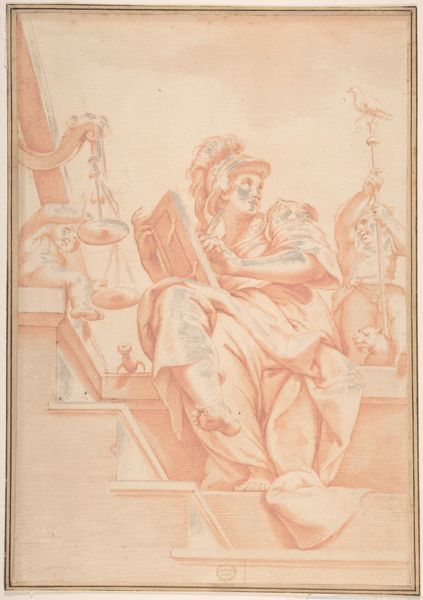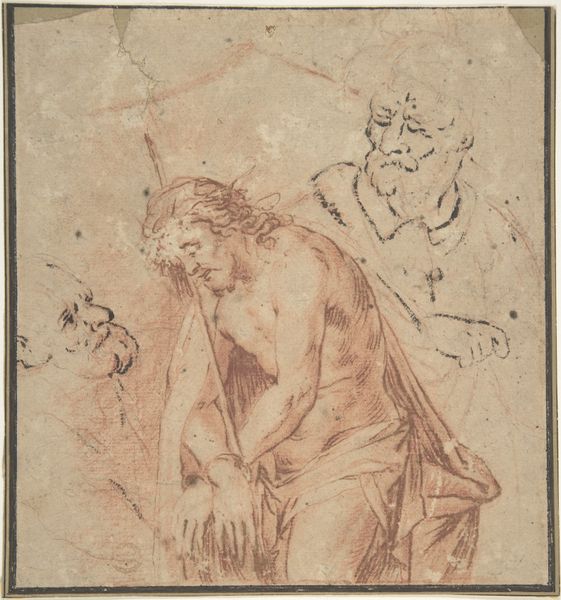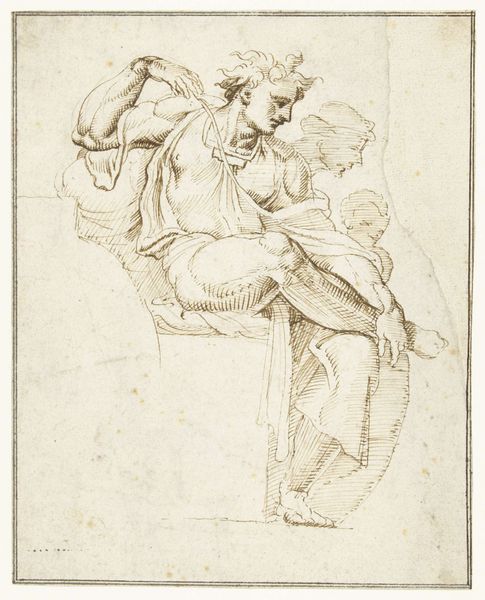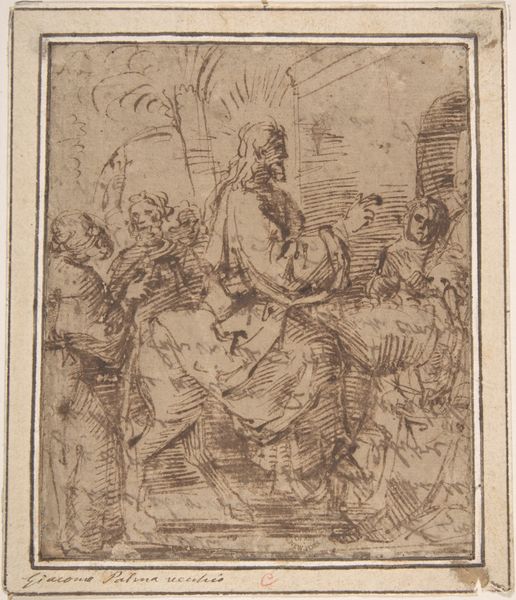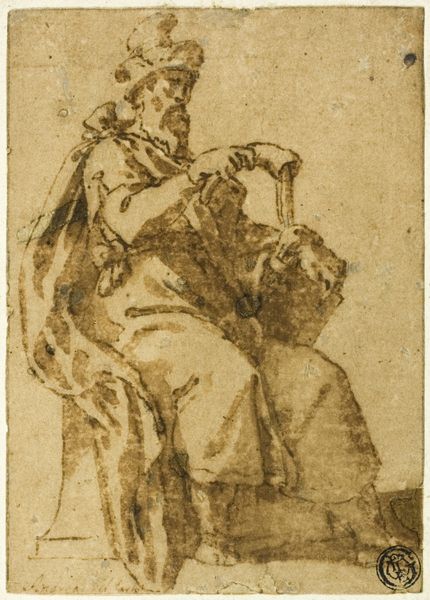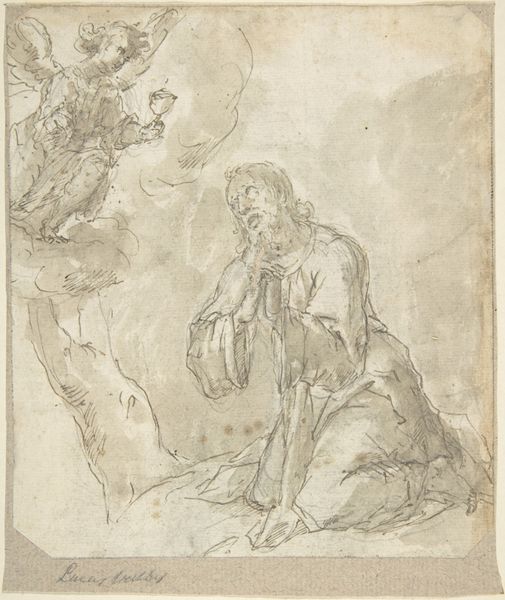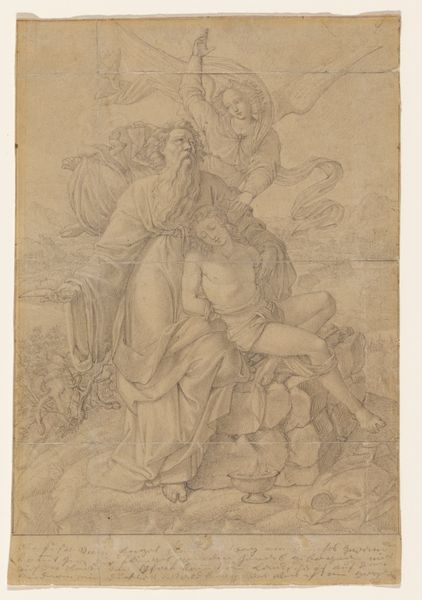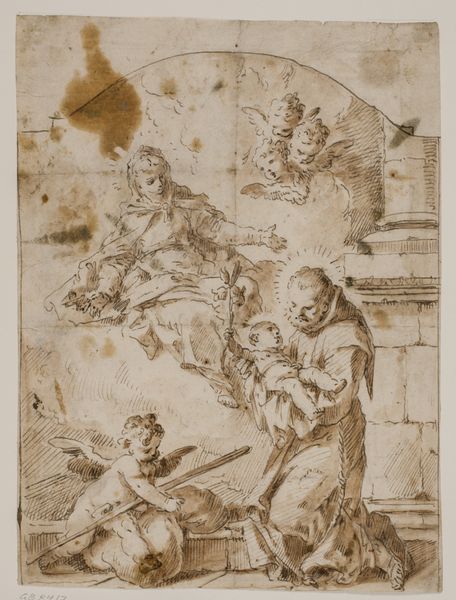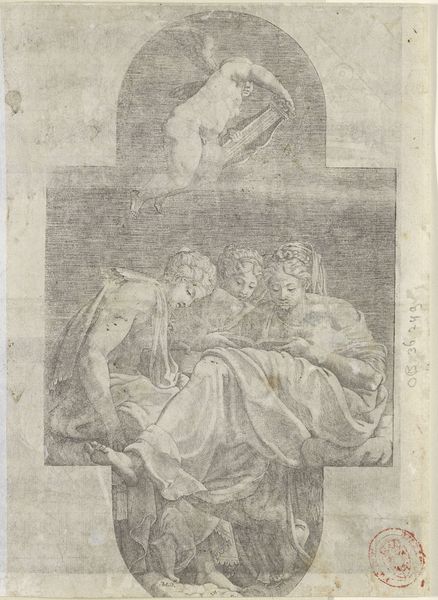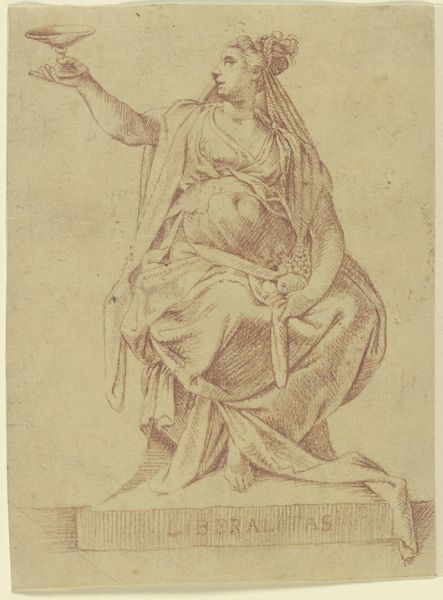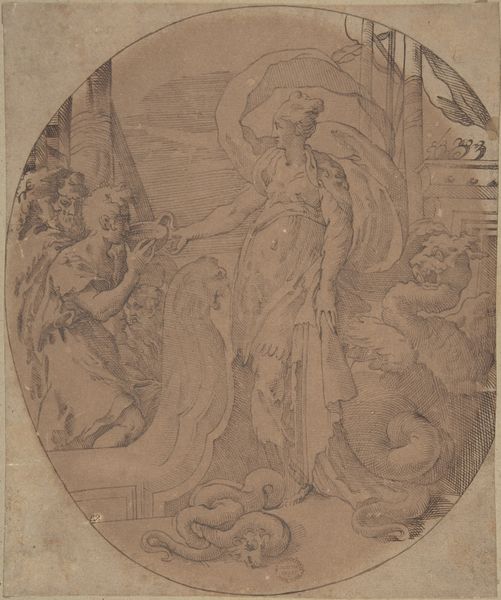
print, engraving
#
portrait
#
baroque
# print
#
figuration
#
engraving
Dimensions: plate: 24.9 x 18.5 cm (9 13/16 x 7 5/16 in.) sheet (cut inside platemark): 25.4 x 18.5 cm (10 x 7 5/16 in.)
Copyright: National Gallery of Art: CC0 1.0
Editor: This is Domenico Maria Viani's "Saint Joseph and the Christ Child," an engraving from the 1690s. The lines feel so delicate, almost fragile. It gives the scene a certain tenderness. What do you see in this piece, especially knowing it's from the Baroque period? Curator: Oh, tenderness is absolutely the word! You know, looking at Saint Joseph's gaze, there's a world of quiet devotion in those etched lines. It's Baroque, yes, so we expect the drama, but Viani subverts it with this almost... domestic intimacy. See how Christ's weight is entirely on Joseph's hands? It speaks of utter trust. I imagine the artist deeply reflecting on fatherhood, perhaps his own experiences. Editor: That idea of "domestic intimacy" is striking in a period known for grandiosity. Was this a common subject for prints at the time? Curator: Religious prints were certainly popular, but Viani's interpretation is distinctive. Most artists would focus on the divine nature of Christ, or Mary's sorrowful grace. Here, Joseph's quiet strength and human connection take center stage. It’s not about power, but care, which I suspect resonated with people facing their own daily struggles. Do you notice the oval frame? What does that say to you? Editor: It sort of concentrates everything, drawing your eye to their connection. Like a world in miniature? Curator: Precisely! A world defined not by booming pronouncements, but whispered affections. I find it endlessly comforting. Editor: I hadn't thought of it that way, but that totally shifts how I see the print! Curator: Art's like that, isn't it? One small detail can unlock a whole new perspective. I learned something today! Thank you for this new understanding of an artwork, and reminding us of art’s reflective, almost reverent qualities.
Comments
No comments
Be the first to comment and join the conversation on the ultimate creative platform.

